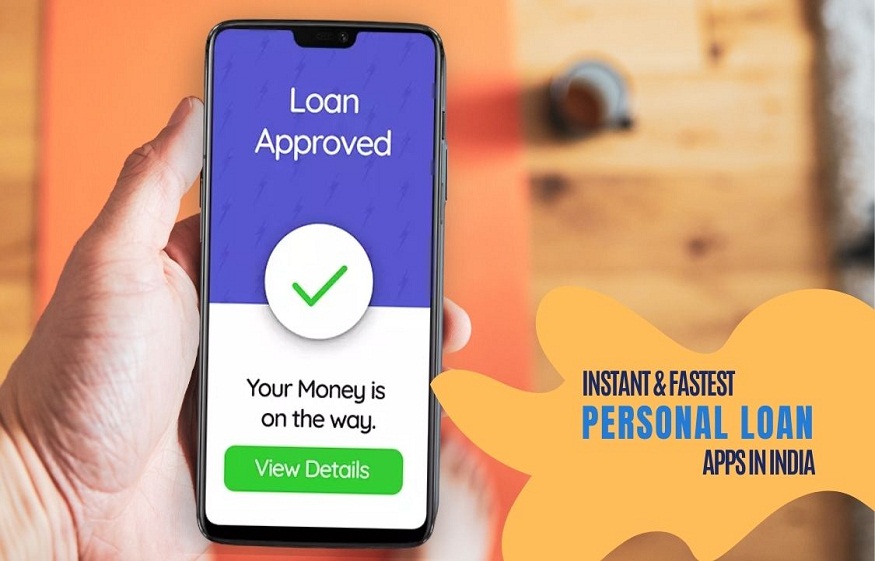In a country where financial needs often outpace access to traditional banking, loan apps have quietly become the unsung heroes for millions of Indians. Whether it’s an emergency medical expense, a business cash crunch, or a personal purchase that can’t wait till payday, digital lending has changed how people approach borrowing. What once required standing in long queues, chasing bank officials, and furnishing piles of documents, is now a few taps away on your smartphone.
The transformation has been nothing short of remarkable. With the rise of instant loan facilities offered via digital platforms, borrowers today can access funds without the red tape that has long defined the Indian lending ecosystem. The convenience is unmatched—and so are the risks, if not handled wisely. But when used responsibly, this shift in lending is empowering people with real-time financial support, minus the bureaucratic delays.
The Paper Trail That Once Held Us Back
For years, taking out a loan in India was synonymous with stress. Multiple visits to the branch, paperwork that included income proofs, property documents, guarantor details, and whatnot, followed by days—sometimes weeks—of waiting for approval. Even for small-ticket loans, borrowers had to go through this drawn-out process. This was especially challenging for people without a stable income source or formal credit history—freelancers, gig workers, small traders, and homemakers, to name a few.
This gap between demand and accessibility is what opened the door for technology-driven solutions. With smartphone penetration spreading even into tier 2 and tier 3 towns, and digital KYC norms becoming mainstream, loan apps began stepping in to bridge the void.
The Mechanics of Instant Lending
What makes a loan app capable of offering an instant loan without the usual paper trail? The secret lies in automation, digital identity verification, and smart credit assessment tools. Most apps leverage your Aadhaar, PAN, and mobile number to verify your identity. The moment you grant consent, your data is fetched directly from official sources—eliminating the need for physical submissions.
In parallel, digital footprints such as transaction history, UPI usage, utility bill payments, and SMS alerts are analysed through machine learning algorithms to evaluate your creditworthiness. This approach often works faster and, for some users, more accurately than traditional credit scores. That’s how many salaried and non-salaried individuals, who may have been invisible to banks, find themselves eligible for a small instant loan.
The loan amount is then directly credited to the user’s bank account, often within minutes of approval. No in-person visits. No bank manager meetings. Just data-driven, real-time processing.
Democratizing Credit Access
The impact of loan apps goes beyond just convenience. They are rewriting the rules of who gets to borrow. For far too long, formal credit was the privilege of the salaried, the urban, and the documented. But a rickshaw driver in Indore, a homemaker running a small tiffin business in Pune, or a student in Kochi looking for emergency tuition funds—these are people who rarely found support from traditional lenders.
With digital lending, credit is no longer the preserve of the privileged. Anyone with a smartphone and a bank account stands a fair chance, provided they use the platform responsibly. This has significant implications for financial inclusion, especially in a country as diverse as India.
However, accessibility shouldn’t be mistaken for ease. Borrowers must still read the fine print, understand repayment terms, and assess their repayment capacity. While instant disbursals may feel liberating, any credit taken without a plan to repay can quickly spiral into a financial trap.
Are Instant Loans Always the Right Choice?
The ability to get a loan in minutes can be a blessing—but it’s not always the right solution. Instant borrowing should ideally be a bridge, not a crutch. The absence of paperwork doesn’t mean the loan is informal. It’s very much a binding financial commitment. Interest rates can sometimes be on the higher side, and defaulting on repayments can affect your credit score.
So when should you opt for an instant loan? When it’s urgent, unavoidable, and within your ability to repay in a timely manner. Think medical bills, travel during emergencies, equipment breakdowns, or short-term working capital needs. It should not be used for luxuries or lifestyle upgrades that you can delay or save up for.
Digital loans are not magic money—they’re simply smarter access to formal finance. The decision to take one should be driven by logic, not impulse
The Role of Technology in Ensuring Safety and Speed
A key driver behind the rise of loan apps is the sophisticated backend tech that ensures security without slowing down approvals. Digital KYC processes, once cumbersome, have now become seamless. OTP-based authentication, biometric verifications, and facial recognition technologies are integrated with real-time credit checks to create a smooth user journey.
Moreover, platforms are now aligning with RBI’s digital lending guidelines, ensuring that users are made aware of loan terms, interest breakdown, and total repayment amount before signing the agreement. There’s also a shift towards transparency, where borrowers can see their payment schedules, track EMIs, and raise service requests from within the app.
In short, borrowers are no longer at the mercy of the lender. The control is slowly shifting back to the user, and that’s how it should be.
What to Keep in Mind While Using Loan Apps
Despite the ease and efficiency of instant loan disbursals, the onus is still on the borrower to exercise caution. There are multiple things you must consider before hitting ‘Apply’ on any loan offer:
First, check whether the lending entity is tied to an RBI-registered NBFC or bank. Avoid anonymous apps that don’t disclose their lender details.
Second, make sure you’re fully aware of all charges—processing fees, late payment penalties, interest rates, and any hidden clauses in the loan agreement.
Third, monitor your digital permissions. Many apps ask for access to contacts, SMS, and location. Unless absolutely necessary for the service, you have the right to deny them access.
Lastly, borrow only what you need and only when you need it. Overborrowing, even when it feels effortless, can lead to a debt cycle that’s difficult to break out of.
Instant Loans and the Bigger Picture
The rise of loan apps isn’t just a convenience—it’s part of a broader transformation in how Indians engage with money. As our economy digitises, credit is becoming more agile, more personalised, and more inclusive. In the process, financial behaviour is also evolving. People are learning to budget, to compare loan terms, and to stay credit-conscious even outside the realm of banks.
The best use of these platforms is when they serve as a tool—not a trap. If you approach them with a clear understanding of your needs, read the terms, and commit to timely repayments, they can offer unmatched support during crunch times.
Wrapping Up: Borrow Smart, Not Just Fast
In a country as dynamic and diverse as India, financial needs can arise in a hundred different forms. The emergence of loan apps offering instant loan solutions without paperwork has certainly made access to credit faster, easier, and more democratic. But with great speed comes great responsibility.
It’s not enough to get approved in five minutes—you need to plan how you’ll repay over the next few months. It’s not about downloading just any app—you need to choose one that aligns with your financial discipline. And it’s never just about getting the money—it’s about using it wisely.
As borrowing becomes more digitised, let us also become smarter borrowers. After all, technology can only empower those who know how to use it well.













